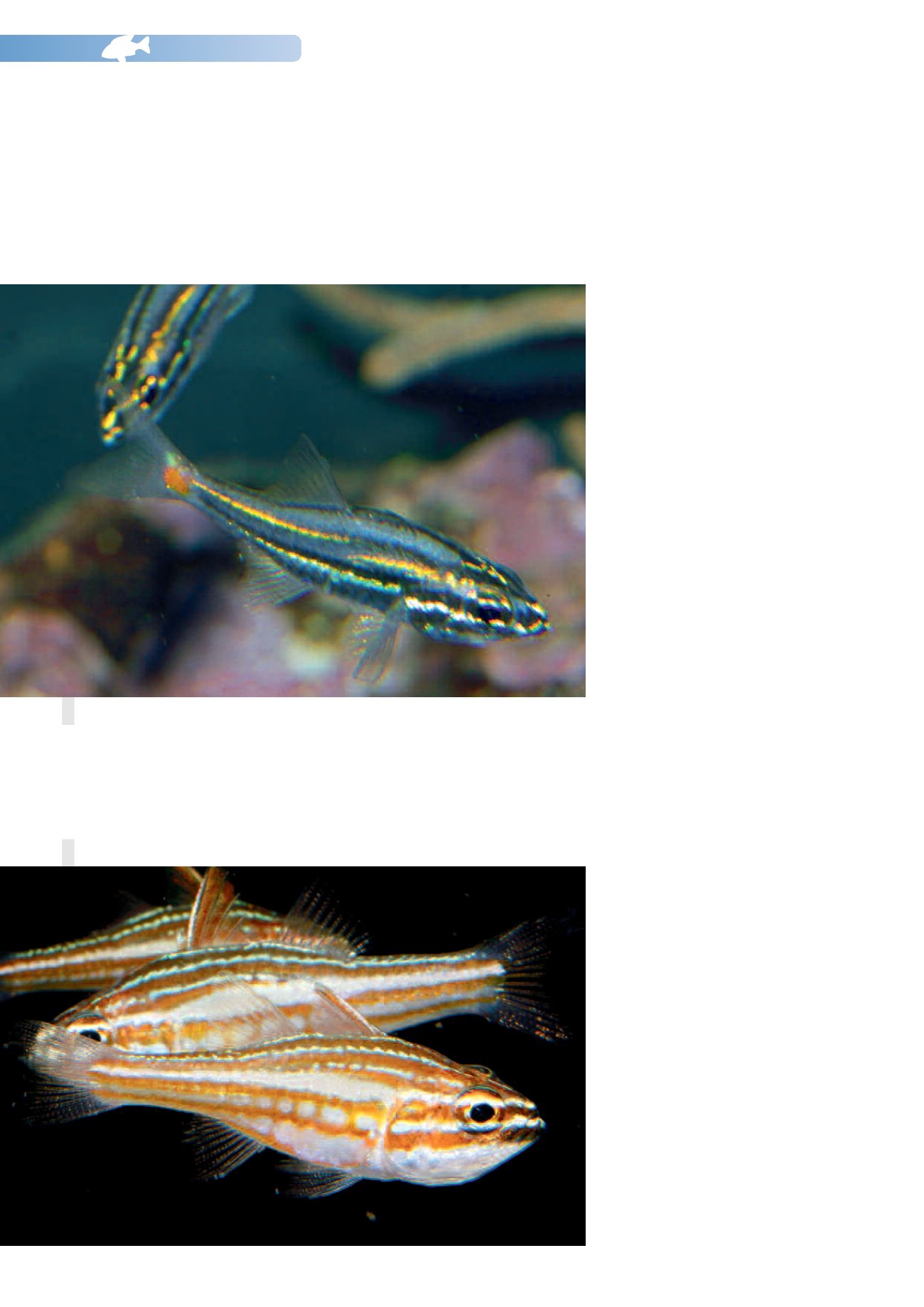
NEWS 110
14
The attractive
Ostorhinchus margaritophorus
grows somewhat larger,specifically 6.5 cm.
Ostorhinchus parvulus
are breathtaking dwarfs that grow to only around 3-4 cm long.
namely the Pajama Cardinalfish
S.
nematoptera
and
the
Orbiculate
Cardinalfish
S. orbicularis
, are noted for
living their lives among mangroves. But
these fishes also like to live in somewhat
murky water, for example in harbors. The
symbiosis with luminescent bacteria seen
in many small cardinalfishes is an
(which belong to the genera
Siphamia
and
Acropoma
, plus species of the genera
Pempheris, Parapriacanthus, Archamia,
Jaydia,
and
Rhabdamia
are capable of
bioluminescence
without
symbiotic
bacteria) haven't yet been imported. A
special aquarium with these little fishes
would be a fascinating sight at night!
saving fishes", as the aquarium lighting
above a cardinalfish aquarium needs only
to satisfy the requirements of the owner,it's
all the same to the fishes.
Social behavior
Essentially,themajority of cardinalfishes are
found in large groups in the wild.The small
species in particular exploit the relative
safety of the shoal. Pairs form from among
the groups, and retire to a shared living
cave at breeding time.In the aquariumpairs
of the Banggai Cardinalfish, for example,
may remain together for many years and
become ever more compatible in their
breeding behavior.
In the aquarium it can also often be
observed that after spawning females
remain in the vicinity of brooding males. In
the wild such observations are only very
rarely possible for obvious reasons. In
Apogon notatus
at least the female remains
in the living cave after spawning, while the
brooding male often leaves to join a shoal
of conspecifics. The female then entices
another random male into the cave (he
may even be a broodingmale) and spawns
with this new mate as soon as the
opportunity arises. So marital fidelity
appears to be more aquarium artifact than
typical behavior - at least in cardinalfishes.
Reproductive behavior
As far as is known to date all cardinalfishes
are paternal mouthbrooders, but obviously
only a very small percentage of the
cardinalfishes in existence are actually so
well known that any definite statements
can be made about their reproductive
behavior. Even such interesting details as
the question of how fertilization of the egg-
ball takes place in the mouth of the male
have been only inadequately studied to
date. Intensive observations of the
spawning behavior of the King of the
Mullets in the Monaco Aquarium by J.
Garnaud in the 1960s were interpreted as
suggesting internal fertilization, as female
Cardinalfishes lay their eggs at a stroke in
large balls, and the males then pick up
these balls within a few seconds without
any act of fertilization being observed. But
adaptation to life in dark, murky water and
enables them to glow in the dark (this is
termed bioluminescence). Unfortunately to
the best of my knowledge these species
Cardinalfishes may tolerate the strong
lighting in modern reef aquaria, but don't
require it at all. For this reason they can be
classified without hesitation as "energy-


